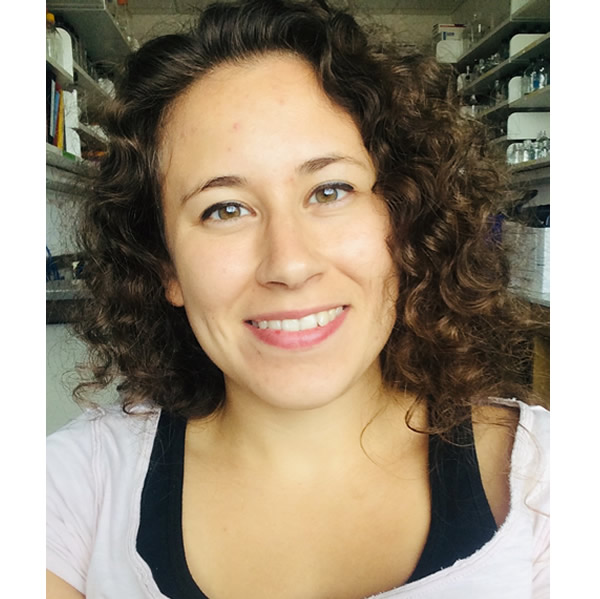
Magda Grzemska, Ph.D.
PostdocEducation and Training
BSc in Medical Physics, University of Silesia, Katowice, Poland
MSc in Medical Physics, University of Silesia, Katowice, Poland
PhD in Cell and Molecular Biology, UT Southwestern, Dallas, TX, USA
In the Najafov Lab, I study cellular signaling pathways mediating programmed cell death.
My previous scientific experiences span from clinical dosimetry, nuclear physics, and programming, through biophysics, to biochemistry and pharmacology. I started off on the clinical side of cancer treatment at my undergraduate University of Silesia in Poland, where I received my master’s degree in medical physics. I came to the US as a Fulbright scholar to work in the Rosenbaum Lab on GPCR crystallography and drug design at UT Southwestern. I later joined Melanie Cobb Lab at UT Southwestern with the desire to explore cellular signaling pathways. In my graduate work, I focused on kinase signaling pathways, cellular response to stress, and endothelial and cancer cell biology. In my main projects, I expanded our understanding of the WNK1/OSR1 pathway by finding novel proteins mediating WNK1-dependent processes and ERK2 intradomain signal transduction by structural analysis. Besides working in the lab and thinking about science, I enjoy playing ice hockey, gardening, and learning about psychology and nature.
Awards and Honors
• CPRIT training grant (2018-2021)
• VRGTP (Visiting Research Graduate Traineeship Program) by the Polish-U.S. Fulbright Committee, Scholarship at UT Southwestern Medical Center
• Rector’s Scholarship for the best students at University of Silesia, Katowice, Poland
• UPGOW (University as a Partner of Knowledge-Based Economy) Internship, Krankenhaus Düren gem.GmbH, Germany
• PIN (Partnership-Informatics-Nanophysics) Internship, University of L'Aquila, Italy
Publications
1. Z. Shao, J. Yin, K. Chapman, M. Grzemska, L. Clark, J. Wang & D. M. Rosenbaum (2016). High-resolution crystal structure of the human CB1 cannabinoid receptor. Nature, 540(7634), 602.
2. M.A. Kalwat, I.H. Hwang, J. Macho, M.G. Grzemska, J.Z. Yang, K. McGlynn, J.B. MacMillan, and M.H. Cobb. Chromomycin A2 potently inhibits glucose-stimulated insulin secretion from pancreatic beta cells. J. Gen. Physiol. 150, 1747-1757, 2018.
3. S. Endapally, D. Frias, M. Grzemska, A. Gay, D. Tomchick & A. Radhakrishnan (2018). Molecular discrimination between two conformations of sphingomyelin in plasma membranes. Cell, 176, 1-14.
4. L. Gui, K. Song, D. Tritschler, R. Bower, S. Yan, A. Dai, K. Augspurger, J. Sakizadeh, M. Grzemska, T. Ni, M. E. Porter & D. Nicastro (2019). Scaffold subunits support associated subunit assembly in the Chlamydomonas ciliary nexin–dynein regulatory complex. PNAS, 116(46), 23152-23162.
5. K. Rodrigues-dos-Santos, G. Roy, D.D. Binns, M.G. Grzemska, F. Armoo, M.K. McCoy, A. Hyunh, J.Z. Yang, B.A. Posner, M.H.Cobb, and M.A. Kalwat. (2022). Small molecule enhancer of insulin secretion selectively induces an adaptive stress response. Endocrinology, Jul 1;163(7):bqac081, 2022.
6. A.B. Jaykumar, S. Plumber, M.G. Grzemska, D.M. Barry, D.D. Binns, S. Earnest, E.J. Goldsmith, S. Stippec, O. Cleaver & M.H. Cobb. WNK1 collaborates with TGFβ in tight junction turnover and angiogenesis. PNAS in press, 2022.
7. C.A. Taylor 4th, M.G. Grzemska, S., Gallolu Kankanamalage, J. Li, S. Earnest, S. Stippec, and M.H. Cobb. Binding determinants of the OSR1/SPAK C-terminal domain identify high probability partners. In preparation. 2022